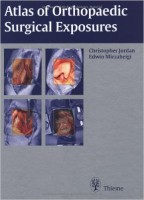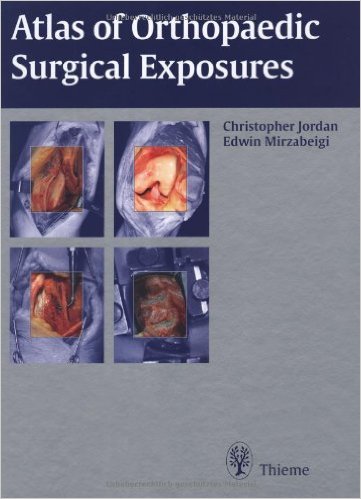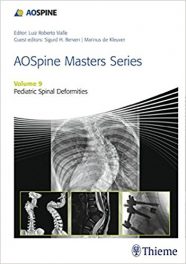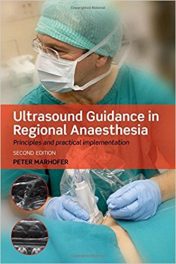 Editors: Christopher Jordan MD and Edwin Mirzabeigi, MD
Editors: Christopher Jordan MD and Edwin Mirzabeigi, MD
Publisher: Thieme – 216 pages
Book Review by: Nano Khilnani
This large book with 61 chapters provides the different approaches used in surgery relating to the upper and lower limbs, joints, and other parts of the human anatomy. Divided into 13 sections as listed below, each section contains a number of approaches – from just two to as many as eight- and a chapter is allocated to each approach.
Providing good images is critical to the success of book on surgery. As a matter of fact, the inability to see exactly in the operating theater the anatomy that he had seen depicted in atlases in the library was something that frustrated the senior author Dr. Christopher Jordan during his residency.
He writes in the Preface: “I would find that the anatomy I was looking at was not the same as that pictured in the books. Most of the books were simply drawings. The few photographic atlases that were available used embalmed specimens, which had different colors and all were predissected. In reality, once you are deep into the subcutaneous tissue, you generally have a sheet of fascia covering everything so that all those landmarks so clearly depicted in anatomy books are, in fact, not visible until you dissect them out.”
Large, clear, full-color photographs are the hallmark of this amply-illustrated book. And succinct captions are provided for each photograph, making learning easier, quicker. When you browse through this book, you see only photographs; no drawings or sketches are used. Yes, this is the real thing! What you see are surgical procedures, plain and simple.
All the textual content for this book was provided by just six contributors (five from California, one from New York) including the two editors named above. Below are the 13 sections around which the content of this book is organized:
- Section I – Shoulder
- Section II – Upper Arm
- Section III – Elbow
- Section IV – Forearm
- Section V – Wrist
- Section VI – Hand
- Section VII – Hip
- Section VIII – Thigh
- Section IX – Knee
- Section X – Lower Leg
- Section XI – Ankle
- Section XII – Foot
- Section XIII – Spine
What is refreshing in this book is the format (the headings of the paragraphs, particularly) is the same in every chapter. Invariably, on the first page of each chapter that precedes the pictures, you will find the following:
- Title of the Chapter (the name of the surgical approach)
- Uses
- Advantages
- Disadvantages
- Structures at Risk
- Technique
- Tricks
- How to Tell If You Are Lost
This is an excellent text on surgical anatomy and, it provides numerous approaches to each procedure, along with the detailed how-to’s, and the pros and cons. I have not come across any other book on the subject that is as comprehensive as this one is, on surgical approaches, with 61 full chapters. I will go so far as to say it’s a must-have book for students, residents, fellows, and even practitioners in orthopedic surgery.
Editors:
Christopher Jordan MD is Director of the Surgical Anatomy Lab at Rancho Los Amigos National Rehabilitation Center in Downey, California.
Edwin Mirzabeigi, MD is Research Associate at NYU – Hospital for Joint Diseases in New York, New York.
Contributors:
Frances Sharpe, MD is Staff Orthopedic Surgeon at Kaiser Permanente Fontana at Los Angeles County / University of South California University Medical School in Los Angeles, California.
Milan Stevanovic, MD is Associate Professor of Clinical Orthopedics, Hand and Microsurgery at Keck School of Medicine at the University of Southern California in Los Angeles, California.
Michael L. Reyes, MD is Resident Physician in the Department of Orthopedic Surgery at Los Angeles County / University of South California University Medical School in Los Angeles, California.
Larry Khoo, MD is Resident Physician in the Department of Neurosurgery at Los Angeles County / University of South California University Medical School in Los Angeles, California.







